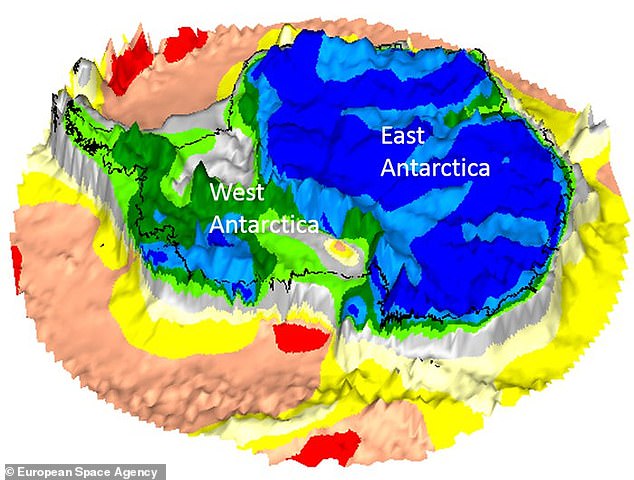Robert sent in these links – https://www.dailymail.co.uk/sciencetech/article-6371355/Relics-lost-cont… … and www.esa.int/Our_Activities/Observing_the_Earth/GOCE/ESA_s_gravity_mapper… … and https://www.nature.com/articles/s41598-018-34733-9 …
The European Space Agency has uncovered relics of lost continents that are hidden beneath Antarctica – for millions of years. Satellite images reveal a record of ancient landmasses buried a mile beneath the glaciated continent. Obviously, there is a good possibility that they did not observe what they say they did so it is important to try and understand their methodology. They used data from the long defunct Gravity Field and Ocean Circulation Explorer (GOCE) which ran out of fuel in 2013. However, scientists are still sifting through reams of data on Earth's gravitational pull and they used this data to map movements of Earth's tectonic plates under Antarctica. In other words they began on the premise that tectonic plates have moved over long periods of times. What if they had measured not plate movement but pole movement – movement of the magnetic pole? They say they have been able to track past tectonic shifts over the last 200 million years – offering new insight into how Antarctica formed. In East Antartica, the greater lump of the continent, they have exposed a mosaic of geological features between the crust of Antarctica and other continents until it was separated around 160 million years ago (when the continents began to split apart). Geoscientists combined the GOCE readings with seismological data in order to create 3D maps – and there is a link to a short video.
The second link has the same story but adds a few more details. For example the main output of GOCE was a high fidelity global gravity map (or geoid) but it also charted localised gravity gradients. The last link, to Nature journal, is a research paper on the same subject. Robert adds, if we were to go along with the idea that gravity was an electrical phenomenon, as promoted by Wal Thornhill, then we could interpret the GOCE results as the state of polarisation of the Earth's surface and possibly the lower crust. Might gravity anomalies be the result of earlier electric discharge events. Robert ends by saying the Earth's surface appears to be more complex that the simple continental-oceanic classification we find with plate tectonics. What of course is fiction in the story is the idea of lost continents – but that is one way to smell the gravy and I am sure there are others.

